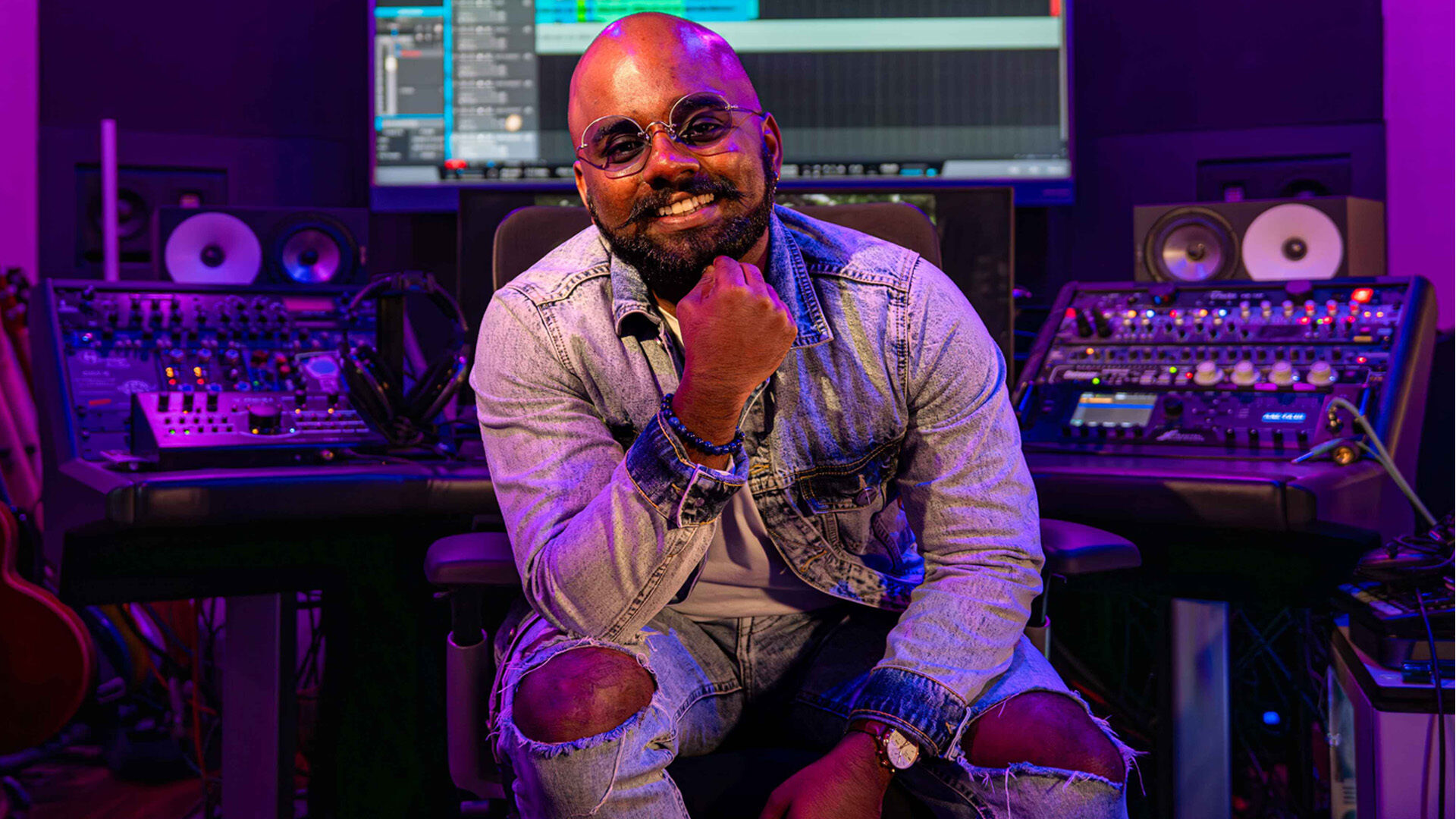Buvaneswaran Ganesan, affectionately known as Buvan, is rapidly emerging as a key figure in Singapore's Tamil music and cultural scene. At just 27, he has already made significant contributions to various projects, ranging from theme songs for drama series and Kollywood films to indie tracks and campaign songs within the Singaporean context. His work is not just about music; it’s about fostering a deep connection to Tamil heritage among the youth. Buvan’s commitment to promoting Tamil language and culture is evident in his recent endeavors, particularly his involvement with the Singapore Tamil Youth Conference (STYC) 2024, where he is producing and sponsoring a groundbreaking soundtrack that encapsulates the event’s essence.
Buvan’s journey in the music industry has been marked by significant milestones, including his recent award for Best Original Track at Pradhana Vizha 2024, which he earned for a song composed for the Tamil Language Festival. His work on this year’s STYC theme song, featuring contributions from Shabir Sulthan and talented vocalists from NUS, is a testament to his dedication to the Tamil cause. As the protégé of Shabir Sulthan, a passionate advocate for Tamil in Singapore, Buvan is entrusted with the responsibility of continuing his mentor’s legacy. His efforts not only reflect his artistic talent but also his commitment to ensuring that the Tamil language and culture remain vibrant and relevant for future generations. We had the chance to sit down with him to explore the motivations behind his passion and work.
Buvan, you’ve recently taken on a significant role by producing and sponsoring the soundtrack for Singapore Tamil Youth Conference 2024. How does it feel to step into this position, continuing the legacy that Shabir has established?
Shabir Music Asia is honored to have supported NUS Tamil Language Society in making this event a success. In the early days of my music career, I had the privilege of collaborating with Shabir on 'Muzhangu', the 1st-ever NUS Sangae Muzhangu theme song, where I worked as a music programmer for Shabir. That experience in 2015 was a significant moment in my journey. Fast forward to 2024, and I feel truly blessed to have taken on the role of composer and producer for this year's Singapore Tamil Youth Conference, organised by the NUS Tamil Language Society and it has been a remarkable journey.
View this post on Instagram
You’ve been entrusted with the responsibility of carrying forward Shabir’s work in promoting Tamil in Singapore. What are some of the key lessons you’ve learned from him, and how do you plan to incorporate them into your future projects?
By working with Shabir, my natural affinity for my mother tongue developed over time. It was subconscious. As a music artist, Shabir is very community driven and he always emphasizes that music is a powerful tool for change. Being with him over the years, I have witnessed this first hand. Shabir Music Asia has actively used music as a tool to support various communities, organizations, and causes. For instance, during the pandemic, we collaborated with the COVID-19 Migrant Support Coalition on an initiative called WeEat, where we collected donations from Singaporeans, bought food from local hawkers, and delivered it to migrant workers.
This effort not only aided the migrant workers but also supported local businesses. In 2020, we launched a program called Letters, a webisode series featuring poems, music, and messages of hope, strength, and resilience in Tamil and Bengali. The series showcased prominent musicians across the region, including the Teng Ensemble and Jeremy Monteiro, and was produced in collaboration with the COVID-19 Migrant Support Coalition. Most recently, we also supported a fundraiser for the Singapore Cancer Society. Through these initiatives, I have learnt that music is a powerful tool and that it helps bring people together and make a positive impact

At just 27, you’ve already made a remarkable impact in the music scene, from composing for Kollywood films to the Singapore indie scene. What drives your passion for creating music, especially when it comes to projects that promote Tamil culture and language?
Firstly, I’m incredibly humbled and grateful for the opportunities I’ve had in my career. Being able to work on Kollywood films alongside Shabir, as we now approach our 10th film together in India, has been an extraordinary experience. We’re also currently involved in a Bollywood project with a prominent producer and director, though I can’t reveal too much about that just yet. What drives my passion for creating music is an innate affinity for it. Some of my biggest inspirations include Shabir, the Grammy award-winning A.R. Rahman, and other influential producers and composers like Tron, Timbaland, Daft Punk, and more recently, Ludwig Göransson.
These individuals have profoundly influenced my experience with film and cinema, shaping how I approach music creation. When it comes to projects that promote Tamil culture, I aim to incorporate the cinematic sound sensibilities I’ve developed over the years into Singapore’s sonic landscape, making the music sound bigger, better, and more immersive. It's crucial that the music serves the narrative, especially when the agenda is to promote the Tamil language. But then again I got into music for the music, thus I subconsciously lean towards using mutli-cultural instruments and blending genres given that I am from Singapore, which naturally becomes part of the music creation process.

Winning the Best Original Track at Pradhana Vizha 2024 for your work on the Tamil Language Festival theme song is a huge achievement. How has this recognition influenced your approach to composing music, particularly for culturally significant projects like STYC?
I'm incredibly grateful to MediaCorp and the Pradhana Vizha jury for recognising our work and presenting us the award for Best Soundtrack, but I wouldn't say that this recognition has fundamentally changed my approach to composing music. My focus has always been on being as genuine as possible, whether I’m commissioned for a project or tasked with writing a new piece. I immerse myself fully in the moment and strive to create something authentic, staying true to my artistic instincts.
While I might adjust my approach slightly depending on the nature of the project, the core of my process remains the same. Recognition like this is definitely motivating, but it doesn’t dictate how I create music. What it does do is make me more aware of how audiences react to my work, and that helps me refine my craft over time. Each composition is a learning experience, and I use that knowledge to improve, but the essence of my approach stays consistent.

The soundtrack you’ve composed for Singapore Tamil Youth Conference 2024 is described as a fresh, global-sounding epic that resonates with the youth. Can you share some insights into the creative process behind this track and what you hope it will achieve?
During the initial discussions about creating the soundtrack for the Singapore Tamil Youth Conference 2024, there were a few key objectives we wanted to achieve. We aimed to create an inspirational and catchy track that would resonate specifically with the Tamil youth of Singapore. Crafting a song like this isn’t easy because, I did not want to compose a song that was too cultural and conventional which might make the song sound “dry” and I had in mind that the song should be vibrant and should engage the youth without diluting the core message.
Growing up, I was heavily influenced by diverse musical genres—from Linkin Park and electronic dance music to contemporary and Tamil music, particularly the works of A.R. Rahman. For this track, I wanted to blend these influences to create something that sounded more urban, akin to what bands like Linkin Park, Fort Minor, or Periphery used to produce.
My goal was to merge rock and metal elements with cinematic soundtrack qualities while incorporating Indian semi-classical elements. For example, you’ll hear Konnakol (a vocal percussion style in Indian classical music) that I perform, layered over a progressive metal guitar riff. This is underscored by cinematic, almost orchestral, anthemic drums. Additionally, I infused traditional Indian instruments like the Nadaswaram (a South Indian woodwind instrument) and the Bansuri (an Indian classical flute) along with subtle Indian melodic elements such as the Veenai. These aren’t immediately at the forefront, but are interspersed throughout the track, creating a unique soundscape.
I believe this fusion is what makes the track work and why it has garnered a positive response from both the public and the students. The amalgamation of these elements from different genres has rarely been done before, if at all, so it really offers a fresh take. I’m glad to have been able to create this new sound through this soundtrack. My hope is that this song not only resonates with the youth but also effectively conveys the essence and objectives of the Singapore Tamil Youth Conference.



